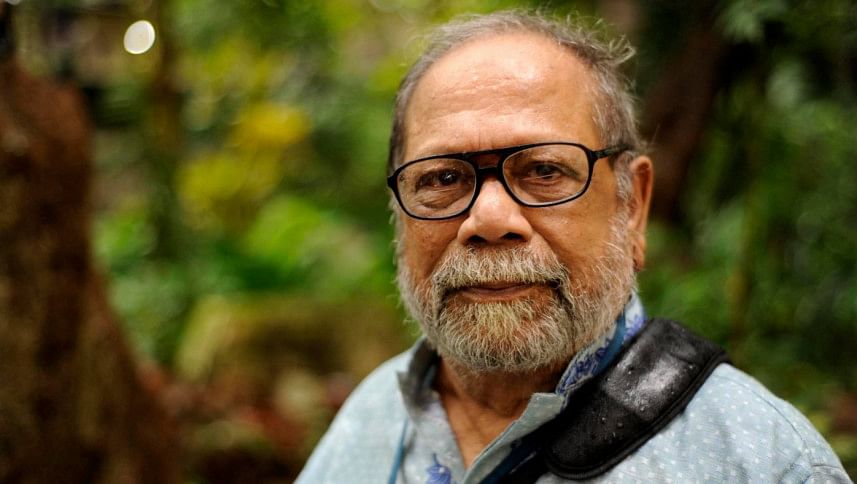Remembering Murtaja Baseer

Today marks the first death anniversary of eminent artist Murtaja Baseer. The art maestro sealed his name in the history of modern art of Bangladesh with his multifarious talents and an extraordinary ability to see even the simplest things from a bird eye's view.
In his 87 years, he remained the purveyor of vanguard thinking by mastering the art of writing poems, short stories, novels, and screenplays. He penned five poetry books, including "Trosorenu", "Tomakei Shudhu" and "Sada Elegy". He also wrote the short stories, "Kanch-er Pakhir Gaan", "Mitar Shangey Char Shandha" and "Amitakkhar". In view of the contemporary life in Kolkata and the social issues in 1954, he wrote a novel titled "Ultramarine". Besides this, he enjoyed studying coins and collecting autographs.
This versatile genius was a student at the Faculty of Fine Art, University of Dhaka, during 1949. Afterwards, he went to Paris to study mosaic and etching at Beaux Arts, before returning to Bangladesh. He created mosaic pieces at Rajshahi University to depict our heritage of terracotta and clay art. He taught at the Fine Arts department at Chittagong University till 1997.
In 1947, Baseer became a member of the student wing of the communist party and drew pictures of Marx, Engels, and Lenin. This is when he began to use painting as a medium to represent significant social issues. He was well-acquainted with sundry paintings by artists of the early and post-renaissance timeline. He also built a knack for capturing the harsh reality he witnessed, and stripping it down to its bare bones.
The socio-political unrest during Ayub Khan's reign induced Baseer to craft the series, "Wings of Butterfly". When he worked on "The Light" series, based on verses from the Quran, he was heavily censured. However, it did not impede his work because he considered using religious motifs to be conventional for artists. His series, "The Wall" portrays the uncertainties that inundate us all by projecting it through different wall textures on the canvas.
During the Liberation War, the predicament our freedom fighters and civilians were in propelled him to make the well-known "Epitaph for the Martyrs" series. The small stones on the streets of Paris used to epitomise the souls of warriors enthused Baseer to start this series, which ended up being a 37-painting series.
Baseer saw a lot of potential for artists in Bangladesh, but also remarked that at first, the barriers need to be smashed. The visionary believed that there should be a Shiplakala Academy in every district and all creative work should be made tax-free.
The author is a freelance journalist. Email: [email protected].

 For all latest news, follow The Daily Star's Google News channel.
For all latest news, follow The Daily Star's Google News channel. 



Comments